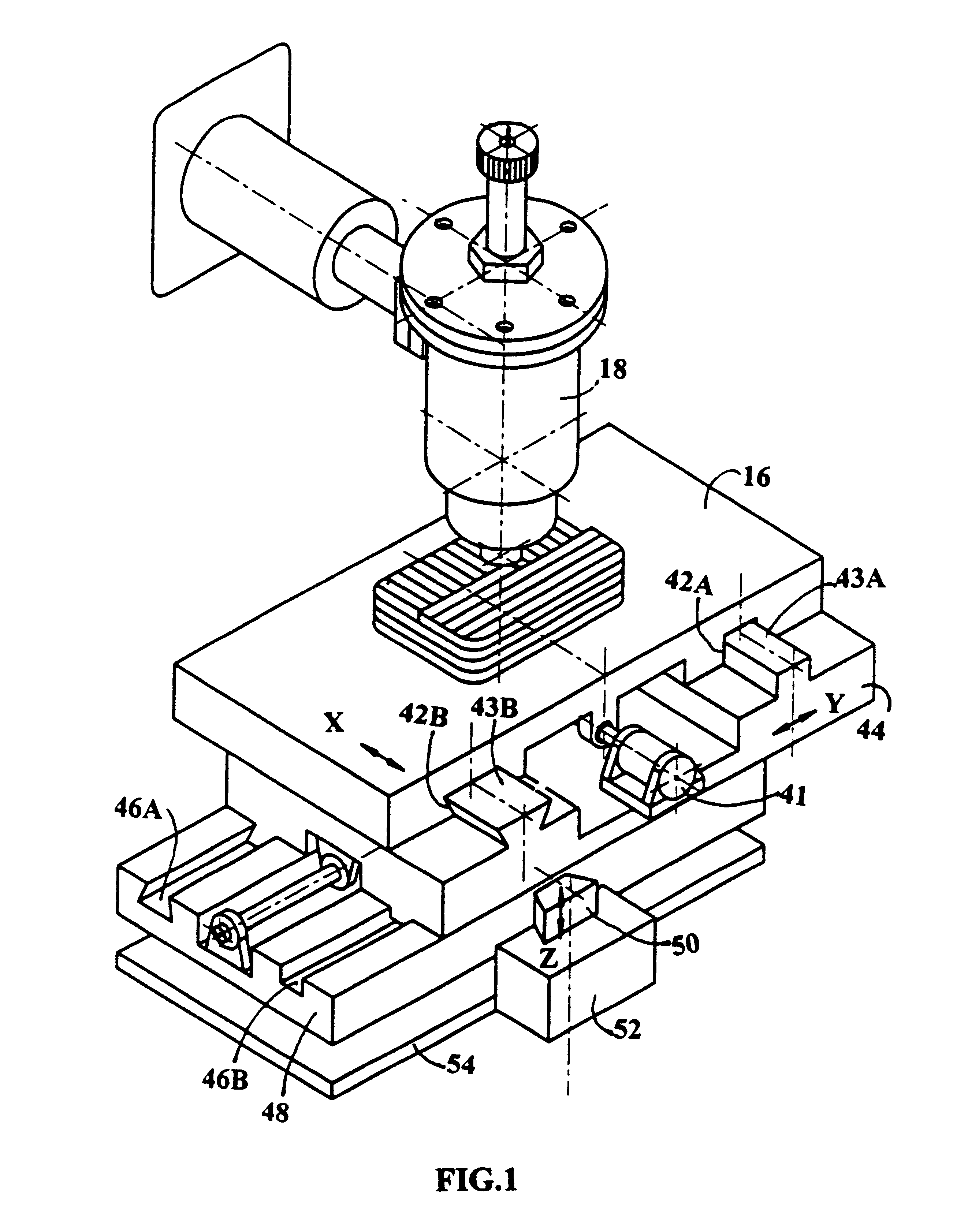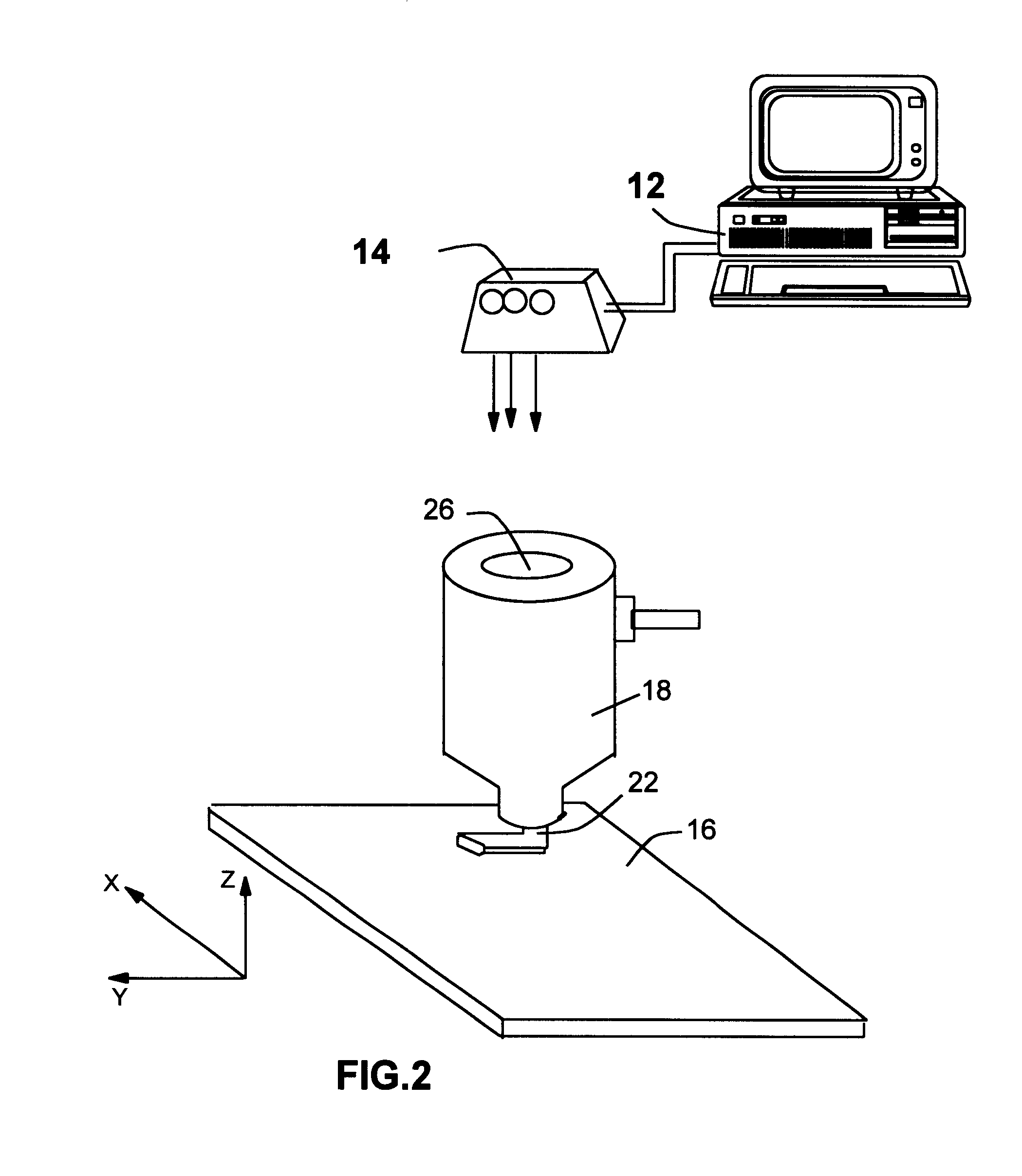Rapid prototyping and fabrication method for 3-D food objects
a technology of additive methods and food objects, applied in the direction of testing food, drawing profiling tools, turning machine accessories, etc., can solve the problems of high temperature of metal, ceramic, glass materials, high cost, etc., and achieve rapid production of a food item model, cost-effective, and versatile and realistic effect of food products
- Summary
- Abstract
- Description
- Claims
- Application Information
AI Technical Summary
Benefits of technology
Problems solved by technology
Method used
Image
Examples
example 2
Corn starch (10 grams) was dissolved in approximately 100 cc of water at approximately 70.degree. C. to form a solution. Approximately 10 grams of finely ground meat granules was added to this solution to increase the consistency (viscosity) of the solution. Such a mixture made a thick paste. This tooth paste-like food composition was extruded through an extrusion-type nozzle to deposit onto a wood-based support member (a kitchen chopping board).
example 3
Potato starch (10 grams) was dissolved in approximately 100 cc of water and 20 cc of cooking wine at approximately 70.degree. C. to form a solution. Additional amount of starch was added to the solution, which was dispersed but not totally dissolved in this mixture of water and alcohol. This slurry-like food composition was extruded through a syringe-type nozzle to deposit onto a polyethylene-based support member to build a 3-D shape layer by layer. The incorporation of alcohol accelerated the thickening or rigidization process of the food composition, which was a multi-material mixture.
Type II:
The food composition of Type II contains a primary body-building material in the form of discrete particles that can be dispersed, but not dissolved in the liquid ingredient, e.g., beacon powder dispersed in water. Water keeps the food composition in a fluent state inside the chamber of a dispensing head, but the food composition is thick and consistent (with a sufficiently high viscosity to ...
example 4
Baking wheat flour (40 g), sugar (5 g), corn syrup (3 g) and yeast (0.7 g) were mixed in 40 grams of water at 50.degree. C. to form a paste. This paste-like food composition was extruded through a syringe-type nozzle to deposit onto a polyethylene-based support member of a 3-D object maker. A 3-D shape was formed layer by layer by using a freeform fabrication machine designed and installed in our lab. The sugar, yeast and corn syrup made the paste relatively thick and they resided between wheat flour particles, helping to bond together these particles when some amount of water was removed. The fabricated 3-D shape was further heated in a kitchen oven to activate the baking process.
PUM
| Property | Measurement | Unit |
|---|---|---|
| Thickness | aaaaa | aaaaa |
| Composition | aaaaa | aaaaa |
| Concentration | aaaaa | aaaaa |
Abstract
Description
Claims
Application Information
 Login to View More
Login to View More - R&D
- Intellectual Property
- Life Sciences
- Materials
- Tech Scout
- Unparalleled Data Quality
- Higher Quality Content
- 60% Fewer Hallucinations
Browse by: Latest US Patents, China's latest patents, Technical Efficacy Thesaurus, Application Domain, Technology Topic, Popular Technical Reports.
© 2025 PatSnap. All rights reserved.Legal|Privacy policy|Modern Slavery Act Transparency Statement|Sitemap|About US| Contact US: help@patsnap.com



